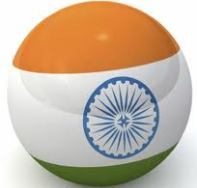As per the scientific studies, it is expected that the ozone layer will be fully recovered to the pre-1980 level by 2050. Although, the production and consumption of major Ozone Depleting Substances (ODSs) responsible for depletion of ozone layer have already been phased-out, still some of these chemicals which were released globally earlier are still active in the stratosphere because of their long atmospheric life, thus this necessitates some time for complete recovery of the ozone layer. The size of Antarctic ozone layer hole measured in October 2010 was 22.2 million square kilometer, while the size reported in 2009 and 2008 were 24 million square kilometer and 27 million square kilometer respectively. This clearly indicates that the global efforts made including by India through the Montreal Protocol for the protection of the ozone layer are in the right direction and the Ozone Layer is on the path of recovery.
Government to Boost Agriculture Growth to Address Poverty
As per Economic Survey of India, 2010-11, while employment in the agriculture sector as share of total workers is 58.2%, the sector accounted for 14.2 per cent of the gross domestic product (GDP) at constant 2004-05 prices. The endeavour of the Government has been to boost growth of agriculture sector to enable it to play its desired role in economic growth and development of the country and simultaneously in improving incomes and socio-economic well-being of farmers.
Dhanalaskhmi Scheme
Government of India has introduced ‘Dhanalakshmi’, a scheme for incentivising birth of the Girl Child. The scheme was launched on a pilot basis, on 3rd March, 2008 in 11 blocks of 7 States. Financial assistance of the amount of Rs.5, 000/- for the birth and registration component, is available to girls born after the cut -off date of 19.11.2008.
Child Marriages
Some of the factors responsible for prevalence of child marriages in the country are: the lack of education and awareness about effects of child marriage, concerns about safety of the girl child, social customs, poor implementation of the law etc. It is to be noted here that the Prohibition of Child Marriage Act has been made effective from November 2007. Currently, under the provision of the Act, marriage involving minors has not been declared invalid. The penalties are provided only for those who promote its solemnisation. The effect of the provisions of the Act become clearer after the results of 2011 Census are published. Being a social evil, spreading education and creating awareness at the grass root level is equally essential.
Rehabilitation of Sex Workers
There is no rehabilitation policy for sex workers. However, to provide rehabilitation services to victims of trafficking for commercial sexual exploitation, the Ministry of Women and Child Development is implementing “Ujjawala”, a comprehensive Scheme for prevention of trafficking and for rescue, rehabilitation and reintegration of such victims, since 4th December, 2007.The Scheme is being implemented mainly through Non Governmental Organisations. 76 Rehabilitative Homes which can accommodate upto 3800 beneficiaries have been sanctioned, under the Scheme, in the country. These Rehabilitative Homes are given financial support for providing the inmates basic amenities such as food, clothing and shelter, medical care, legal aid, education in case the victims are children as well as for undertaking vocational training and income generation activities to provide the victims with alternate livelihood option. Further, rehabilitation is also envisaged through reintegration of the victims into the society for which financial assistance is provided for setting up of Half-Way Homes and for restoration of the victims to their families.
Use of GM Seeds
Among the use of Genetically Modified (GM) seeds, Bt Cotton is the only transgenic crop approved for commercial cultivation in the country. The State Governments of Kerala, Bihar and Madhya Pradesh have informed that GM crop field trials will not be allowed in the State. Recognizing that agriculture is a State subject and the role of the State Government in monitoring the GM crop field trials, the GEAC has decided to issue the approval letters for field trials only on submission of NOC from the respective State Governments so as to avoid disruption of ongoing research trials.
Reduction in Green House Gas Emission
The largest contributor in percentage term of global greenhouse gas emissions is China-19.5% as per current information. It is followed by USA-19.2%, India-5.3%, Russia-5.1%, Japan-3.6% and Germany-2.6%. India has announced that it will endeavour to reduce emissions intensity of GDP by 20 to 25 percent in comparison to the 2005 level by 2020. Government has launched National Action Plan on Climate Change that includes National Solar Mission and National Mission on Enhanced Energy Efficiency which aim at reducing emissions intensity of GDP. Government follows the policy of sustainable development through a range of programmes aimed at energy conservation, improved energy efficiency in various sectors; promoting use of renewable energy; power sector reforms; use of cleaner and lesser carbon intensive fuel for transport; fuel switching to cleaner energy; afforestation and conservation of forests; promotion of clean coal technologies and encouraging Mass Rapid Transport systems.
Schemes for Increasing per Capita Forest Cover in the Country
The per capita forest cover of India is 0.06 hectare while the global per capita forest cover is 0.6 hectare. To increase the per capita forest coverage in the country, the Ministry of Environment & Forests is implementing a Centrally Sponsored Scheme of National Afforestation Programme (NAP) for regeneration of degraded forests and adjoining areas in the country. The scheme is implemented through a decentralized mechanism of State Forest Department Agency (SFDA) at State level, Forest Department Agency (FDA) at Forest Division level and Joint Forest Management Committees (JFMCs) at village level. The choice of species to be planted under NAP Scheme is decided by JFMCs, based on local preferences, suitability of land and agro climatic conditions.






0 comments: